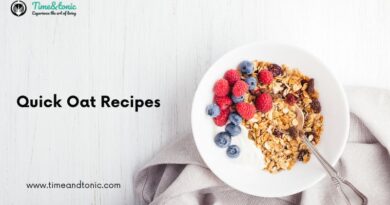The 10 Best Methods for Menopausal Belly Fat Loss
Best Methods for Menopausal Belly Fat Loss – Menopausal belly fat poses a unique challenge for women undergoing hormonal changes. As estrogen levels decline during menopause, there’s a noticeable shift in fat distribution, with an increased tendency for fat accumulation around the abdomen.
Beyond aesthetic concerns, this visceral fat is linked to health risks, including cardiovascular issues and metabolic disorders. Addressing menopausal belly fat requires a comprehensive approach that encompasses dietary adjustments, regular exercise, stress management, and potentially hormone replacement therapy (HRT).
In this guide, we will explore the most effective methods for targeting and reducing menopausal belly fat, providing practical insights to empower women during this transformative stage of life. Emphasizing holistic lifestyle changes, this guide aims to promote not only aesthetic improvements but also overall well-being and health.
Importance of addressing menopausal belly fat

Addressing menopausal belly fat is crucial for both aesthetic and health reasons. During menopause, hormonal changes, particularly a decline in estrogen, lead to a redistribution of fat, with a heightened tendency for accumulation around the abdominal area. This visceral fat is not only stubborn but also poses significant health risks.
Firstly, menopausal belly fat is associated with an increased risk of cardiovascular diseases, including hypertension and elevated cholesterol levels. Additionally, it contributes to metabolic disorders, such as insulin resistance and type 2 diabetes. Visceral fat is metabolically active, releasing inflammatory substances that can further exacerbate these health issues.
Beyond the physical health implications, menopausal belly fat can impact a woman’s mental well-being, influencing body image and self-esteem. Addressing this issue goes beyond cosmetic concerns, as it directly correlates with overall health and the prevention of chronic diseases.
Therefore, adopting effective methods to reduce menopausal belly fat is not only about achieving a trimmer waistline but is a proactive step towards promoting longevity and a higher quality of life during and after menopause.
Also, Read – Snacking for Belly Fat Reduction
Best Methods for Menopausal Belly Fat Loss
Healthy Eating

Opt for a balanced diet rich in whole foods: lean proteins like chicken and fish, whole grains such as quinoa and brown rice, and plenty of fruits and vegetables. Include healthy fats like avocados and nuts, and prioritize portion control.
Minimize processed foods, sugary snacks, and sodas. Stay hydrated with water, herbal teas, and limit alcohol intake. Choose nutrient-dense options to support overall health, and consider smaller, more frequent meals to regulate metabolism. Listen to your body’s hunger and fullness cues, aiming for a colorful plate that reflects diverse nutritional sources.
Regular Exercise
Incorporate regular exercise into your routine for overall well-being. Aim for at least 150 minutes of moderate-intensity aerobic activity per week, such as brisk walking or cycling. Include strength training exercises at least two days a week to build muscle and boost metabolism.
Find activities you enjoy, making it easier to stay consistent. Mix cardio and strength workouts for a balanced approach. Don’t forget flexibility exercises like yoga or stretching to enhance mobility.
Small changes, like taking the stairs or going for a short walk, can contribute to a more active lifestyle. Consult with a healthcare professional before starting a new exercise regimen.
Strength Training

Incorporate strength training into your fitness routine to build muscle, increase metabolism, and enhance overall health. Aim for two or more sessions per week, focusing on major muscle groups with exercises like squats, lunges, deadlifts, and push-ups.
Use free weights, resistance bands, or machines based on your preference and fitness level. Gradually increase resistance for progressive challenge. Prioritize proper form over heavy weights to prevent injuries.
Allow muscles time to recover between sessions. Consult with a fitness professional to tailor a program to your needs. Strength training not only aids in fat loss but also promotes bone health and functional fitness.
Also, Read – Best 10 Superfoods for Weight Loss
Hormone Replacement Therapy (HRT)

Hormone Replacement Therapy (HRT) can help manage menopausal symptoms, including belly fat gain, by supplementing declining hormone levels. It involves administering estrogen, progesterone, or a combination, depending on individual needs. HRT may alleviate hot flashes, mood swings, and sleep disturbances, contributing to overall well-being. However, risks and benefits should be carefully evaluated with a healthcare provider.
Not suitable for everyone, HRT’s potential cardiovascular and breast cancer risks require consideration. Individual responses vary, and periodic reevaluation is essential. Women considering HRT should discuss their medical history, preferences, and concerns with a healthcare professional for personalized guidance.
Stress Management
Prioritize stress management for overall health and belly fat reduction. Incorporate relaxation techniques such as deep breathing, meditation, or yoga into your daily routine. Establish boundaries to manage work-life balance effectively. Regular physical activity, such as walking or jogging, can alleviate stress.
Ensure adequate sleep, aiming for 7-9 hours each night. Identify stress triggers and develop coping strategies. Consider activities you enjoy to unwind, fostering a positive mindset. Build a support system through social connections.
Delegate tasks when possible and learn to say no. Seeking professional guidance, like counseling, can provide valuable coping tools. Managing stress contributes not only to emotional well-being but also supports a healthier body composition.
Adequate Sleep
Prioritize adequate sleep for optimal health and weight management. Aim for 7-9 hours of quality sleep each night. Establish a consistent sleep schedule, going to bed and waking up at the same time daily.
Create a calming bedtime routine to signal relaxation, such as reading or gentle stretching. Keep the sleep environment comfortable, dark, and cool. Limit screen time before bed, as blue light can disrupt sleep patterns.
Avoid stimulants like caffeine in the evening. Quality sleep regulates hormones related to hunger and stress, crucial for managing belly fat. Consult a healthcare professional if sleep issues persist for personalized advice.
Hydration

Maintain optimal hydration for overall health and weight management. Aim for at least 8 glasses (64 ounces) of water daily, adjusting for individual needs and activity levels.
Carry a reusable water bottle to encourage regular intake. Infuse water with citrus or herbs for added flavor without calories. Hydrate consistently throughout the day, paying attention to thirst cues. Limit sugary drinks and excessive caffeine, as they can contribute to dehydration.
Adequate hydration supports digestion, metabolism, and can prevent overeating by reducing false hunger signals. Monitor urine color; pale yellow indicates proper hydration. Prioritize water intake as a simple yet crucial component of a healthy lifestyle.
Limit Processed Foods and Added Sugars
Reduce processed foods and added sugars for improved health and weight control. Choose whole, unprocessed foods like fruits, vegetables, lean proteins, and whole grains. Read labels to identify and limit added sugars in packaged items.
Opt for natural sweeteners or small amounts of honey or maple syrup when sweetness is desired. Processed foods often contain unhealthy trans fats and high levels of sodium; opt for homemade meals to control ingredients.
Replace sugary snacks with nutrient-dense alternatives like nuts, seeds, or fresh fruits. This shift not only aids in belly fat reduction but also supports overall well-being by providing essential nutrients and energy without excess empty calories.
Fiber-Rich Foods

Incorporate fiber-rich foods for better digestion and weight management. Choose whole grains like oats, quinoa, and brown rice over refined grains. Increase fruit and vegetable intake, opting for a variety of colors and types. Legumes, beans, and lentils are excellent sources of fiber and plant-based protein.
Snack on nuts and seeds for a satisfying crunch with added fiber. Fiber promotes a feeling of fullness, reducing overall calorie intake. It also helps regulate blood sugar levels, supporting weight control.
Gradually introduce fiber to avoid digestive discomfort, and ensure adequate water intake to maximize its benefits. A fiber-rich diet contributes to a healthier gut and can aid in menopausal belly fat loss.
Consistent Routine

Establish a consistent routine to support menopausal belly fat loss. Maintain regular meal times to regulate metabolism and control portion sizes. Schedule at least 150 minutes of moderate-intensity exercise weekly, incorporating both aerobic activities and strength training.
Consistency in sleep patterns, aiming for 7-9 hours nightly, helps balance hormones related to hunger and stress. Prioritize stress management through practices like meditation or deep breathing.
Create a stable daily schedule to enhance overall well-being and facilitate habit formation. Consistent routines contribute to a healthier lifestyle, aiding in weight management during menopause. Adjustments can be made based on personal preferences and evolving needs.
Conclusion
In conclusion, addressing menopausal belly fat is pivotal for both physical and mental well-being. Beyond aesthetic considerations, reducing visceral fat mitigates cardiovascular and metabolic risks associated with hormonal changes. Adopting a holistic approach, encompassing balanced nutrition, regular exercise, stress management, and potential medical interventions, empowers women during this transformative life stage. Embracing these lifestyle changes not only fosters a healthier body but also enhances overall vitality, ensuring that women can navigate menopause with resilience and confidence.
FAQs
While a balanced diet is crucial, a combination of dietary modifications, regular exercise, stress management, and potentially hormone replacement therapy (HRT) may be more effective in addressing menopausal belly fat.
Cardiovascular exercises, strength training, and core exercises are beneficial. These activities help burn calories, build lean muscle mass, and target abdominal muscles, contributing to overall fat loss.
HRT can be effective, but its safety and appropriateness vary for each individual. Consultation with healthcare professionals is essential to assess risks and benefits and tailor a personalized treatment plan.




